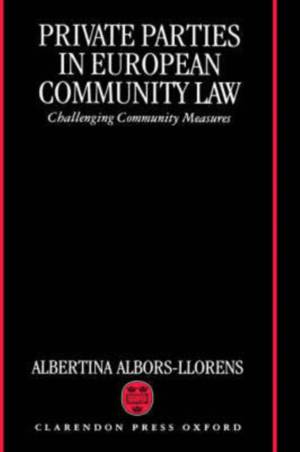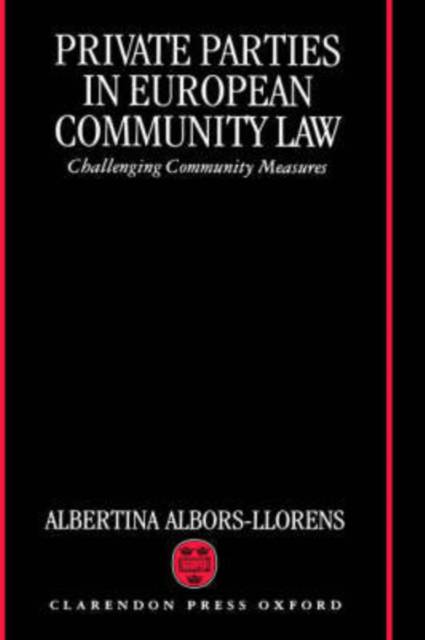
- Retrait gratuit dans votre magasin Club
- 7.000.000 titres dans notre catalogue
- Payer en toute sécurité
- Toujours un magasin près de chez vous
- Retrait gratuit dans votre magasin Club
- 7.000.000 titres dans notre catalogue
- Payer en toute sécurité
- Toujours un magasin près de chez vous
Private Parties in European Community Law (Challenging Community Measures)
Challenging Community Measures
Albertina Albors-Llorens
Livre relié | Anglais
243,95 €
+ 487 points
Description
The European Community legislative process is still characterized by a certain lack of democracy, even after the Maastricht amendments to the European Community Treaties. It is therefore a matter of great importance that there is an adequate system of judicial review of community acts which will enable private parties to challenge illegal, invalid and unfair community administrative actions. There thus exists a system by which private parties can bring direct and indirect actions to seek redress. The direct actions are the actions for annulment and the action for a failure to act. The indirect action is the plea of illegality. In addition to this system specifically designed to assess the legality of community measures there are two other remedies not intended for this purpose but which are used to effect a consideration of the legality of a certain act: these are preliminary rulings on the validity of acts of the Institutions and actions for damages. The book is divided into two parts. The first part deals extensively with annulment proceedings. The drafters of the EC Treaty attached severe conditions of locus standi to this remedy and it has fallen to the European Court of Justice to interpret and apply these conditions through its Case Law. Commentators have found it difficult to discern a common trend in the approach of the court to the locus standi issue. It appears clear however that the court has followed a very restrictive approach and that many actions have been dismissed as inadmissible. The author of this work re-examines the Case Law and systematizes it to highlight specific areas (particularly anti-dumping, competition and state aids cases) and to a lesser extent in the area of general management of the market where there has evolved a more lenient approach to the determination of the issue of locus standi of natural and legal persons. The second part of the book deals with the alternative means of review (ie via an Article 177 Treaty reference) and suggests that these proceedings do not provide adequate protection of the interests of private parties in all situations where annulment proceedings cannot be brought because the applicants involved lack locus standi even though a certain degree of damage may have been inflicted to their interests. Besides setting out the various remedies and showing how actions can be mounted successfully the book also assesses the extent to which the court may have shifted its approach to the locus standi question. It also reveals the areas where private parties may not always find an adequate or appropriate means of redress against illegal community actions.
Spécifications
Parties prenantes
- Auteur(s) :
- Editeur:
Contenu
- Nombre de pages :
- 310
- Langue:
- Anglais
Caractéristiques
- EAN:
- 9780198260806
- Date de parution :
- 29-08-96
- Format:
- Livre relié
- Format numérique:
- Genaaid
- Dimensions :
- 161 mm x 240 mm
- Poids :
- 612 g







